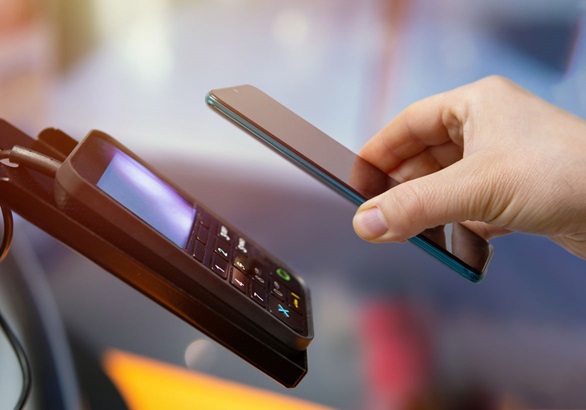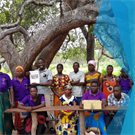The pandemic has accelerated the migration to digital financial channels in Latin America and the Caribbean, reducing the unbanked population in Brazil, Colombia and Argentina by an impressive 40 million (Mastercard study).
Although the adoption of mobile wallets in the region had not been as dizzying as in Europe, Africa or Asia, the fear of manipulating and exchanging cash, along with activities such as online shopping and contactless payments, have helped mobile wallets position themselves in the minds of users, merchants and institutions. In 2021 digital wallets accounted for 19.2% of LATAM e-commerce spend and are projected to reach one-quarter of transaction value by 2025 (FIS Global Payments Report 2022).
Mobile wallets enabling access to finance in LATAM
In Latin America, 45% of adults (or 200+ million people) do not have access to formal financial services. Most of them live in remote rural areas where they work as micro-entrepreneurs and small traders who are accustomed only to the use of cash.
To solve this problem, mobile wallets and digital payments help bring unbanked users into the formal economy. With the use of a conventional phone or smartphone, individuals can manage stored value accounts, bank accounts, or tokenized cards to perform simplified and secure low-level financial transactions.
The user of the wallet can receive money, retain it, send it, open a digital account, buy with QR codes in affiliated stores, pay bills, make recharges, request credit, and receive social assistance funds, payroll payments, and more.
Financial institutions using mobile wallets to grow customer base
The referral modules of most e-wallets help their ecosystem to have an exponential organic growth because an individual user of the wallet can send funds to another person who is not part of the ecosystem. A text message is sent to the receiver to notify them that they have received a transfer and will be funded once they download the application and finish the self-registration process to meet the minimum KYC (Know Your Customer) requirements dictated by the platform administrator.
These new users in the ecosystem are a valuable source of customers for financial institutions that wish to offer them formal financial products such as savings accounts and nano-credits that are used by AI tools to study the transactional behavior of wallet users.The financial institution that manages the platform may also receive commission for payment transactions to third parties made by end users, or through the sale of cross-services (Insurance, transport tickets, etc.). With the facility to pay for their services or products in the application and save on the time and transportation costs of visiting the store or branch, users are not reluctant to accept the small percentage of commission.
The current challenges with mobile wallets in LATAM and how to overcome them
The market opportunity for e-wallets in LATAM has given birth to numerous offerings in the space, but not all mobile wallets have been able to obtain enough users to consider themselves successful.
By delving a little deeper into its activities and characteristics, we can identify some key causes and recommendations to solve those challenges:
1. Lack of strong partner strategy and API platform to support it
2. Preference for cash
3. Low availability of physical access points to convert wallet balance into cash
It is recommended to establish a network of physical access points (Agency Banking) or integrate a network of third parties that, in addition to accepting deposit and cash withdrawal transactions for wallets, generates added value by performing financial activities similar to those of the bank branch, such as: Registration of customers, monitoring of the KYC process to capture documents, biometrics,opening of accounts, sale of cross products (insurance, tickets, etc.), and credit payments and applications.
4. Fees for cash withdrawal transactions
5. Confidentiality of personal data, like a Telephone number
Using a Telephone Number as the only means for users to make transactions in the ecosystem does not protect the confidentiality of the information of individuals from small unknown merchants. It is suggested to also use the number of the stored value account to make transactions, or enable the QR payments module in the merchant network to provide greater convenience for all users.
6. Interoperability
With numerous payment formats launching into the market, the issue of how to jump between the different payment instruments arises. Central banks in LatAm have an important role to play by formulating regulations and standards for interoperability, creating alliances between providers, and building central infrastructures that will allow the connection between the various payment operators. To participate in any nation-wide schemes, though, it is key for digital wallet operators to employ an API-driven platform that allows them to easily make such integrations and comply with interoperability rules.
How does Software Group's Mobile Wallet Platform ensure the success of your business?
We believe that a mobile wallet should extend beyond digital payments to create long-lasting relationships between financial service providers, their ecosystem partners, merchants, and consumers.
Our Mobile Wallet Solution provides rich portfolio of mobile financial services, such as instant P2P payments, digital loans, savings, insurance, airtime top-up, payments via contactless technologies (NFC and QR coding), easy and fast self-registration, split bill functionality, rewards, coupons, discounts, cardless ATM transactions, budgeting, planning, and chatbots.
https://iupana.com/2022/01/17/digital-payment-trends-2022/?lang=en
https://offers.worldpayglobal.com/rs/850-JOA-856/images/ENGPR2022.pdf






